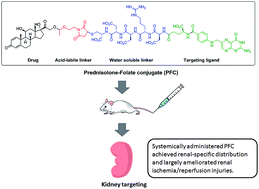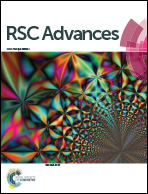Renal-specific delivery of prednisolone-folate conjugates for renal ischemia/reperfusion injury†
Abstract
Prednisolone-folate conjugate (PFC) was synthesized to achieve renal-targeted delivery and specific intracellular release of prednisolone. Our results highlight the significance of folate-mediated targeted delivery to the kidney and the consequent in vivo therapeutic efficacy of PFC against renal ischemia/reperfusion injury.


 Please wait while we load your content...
Please wait while we load your content...